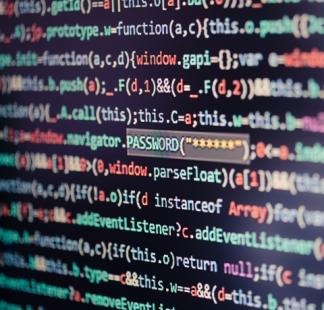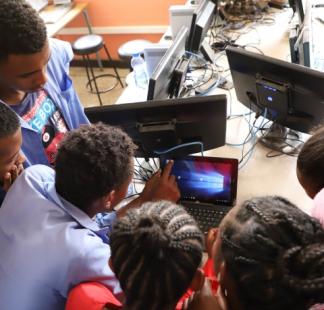- Roxana WIDMER-ILIESCU
Introductory
Description
This self-paced online course on inclusive digital communication during crises and emergency situations has been developed in response to the COVID-19 pandemic. This health crisis has revealed the importance of ensuring that every person can access and utilise digital information provided through digital platforms, which in these situations could be vital. The world is facing an unprecedented experience in which Information and Communication Technologies (ICTs) are, in certain circumstances, almost the only possibility for people to communicate with one another. The importance of accessing instructions and vital information during the COVID-19 pandemic period was crucial for all people. This pandemic exposed potential exclusion and inequalities in the digital world, particularly for persons with disabilities, migrants, illiterate or low literacy persons, and other vulnerable groups. It is essential that digital information products and services are designed, developed, and delivered in digitally accessible formats to ensure that all people, regardless of their gender, age or ability can access and benefit from technology. This training explains why it is essential that crucial digital information during crises and emergency situations be distributed and made available in digitally accessible formats to ensure that no one is left behind. It further presents how to ensure that digital information will reach all people, including persons with disabilities and particularly those with visual or hearing impairments that require alternative solutions such as screen readers, captioning or sign language to read and understand digital information.
This course is recommended for all personnel working in public communications, particularly those called upon to provide information in crisis and emergency situations. This training course is designed for all stakeholders (including ITU members, ICT service providers, policymakers, and ICT stakeholders) or individuals who wish to enhance their knowledge on the topic of ICT Accessibility.
To ensure inclusive learning, this online self-paced training course has been designed and developed in digitally accessible formats and is, therefore, accessible to all people, including persons with disabilities, such as blind persons or persons with visual impairments, deaf persons and/or persons with hearing impairments.
No prior knowledge or qualification on the subject matter is required to complete this training course.
Upon completion of this course, learners will be able to:
- Recognize the importance of accessible digital communication during crises and emergency situations.
- Examine the concepts related to inclusive digital communication and ICT accessibility.
- Name and identify specific actions to ensure vital information is accessible for all people, including persons with disabilities, on various communication platforms.
- Recognize the phases of a crisis to anticipate, mitigate, and problem solve effectively.
- Describe the importance of inclusive digital communication during crises or emergency situations.
This course is delivered through a player which supports several accessibility features. All text is read out by a state-of-the-art text to speech engine. Volume can be adjusted and closed captions are available. The course player works with JAWS 16 and later, NVDA, as well as Voiceover and Talkback screen readers in a range of browsers.
Each module contains its own quiz, presented at the end of each topic. The learner must answer all questions correctly to complete each module. The learner may attempt each question as many times as they wish. After completing each module, the learner must take the final quiz to receive the course completion badge from the ITU Academy. It is necessary to obtain a score of 70% or higher in each module to receive your ITU Academy badge for the course. Please note that quizzes within the course do not contain their own audio or captions.
The course provides holistic knowledge on the topic of ensuring inclusive digital communication during crises and emergency situations in the following five (5) modules:
Module 1: Introduction and key concepts
This module provides learners with an overview of the importance of ensuring digital communication during emergency and crises situations. It highlights the significance of inclusiveness to acknowledge every segment of the population, including those living in poverty, elderly citizens, persons with disabilities, and all women and children. Key concepts such as digital communication, accessibility requirements and digital inclusion are also introduced.
Module 2: Emergencies, crises, and contingency plans
This module clarifies the differences between an emergency, crisis, hazard and disaster and their various impacts on society. Relevant information on how to develop contingency and emergency plans is also presented. This module introduces the National Emergency Telecommunication Plan (NETP) which includes regulatory framework for disaster risk management in four phrases; mitigation, preparedness, response, and recovery. Lastly, this module covers the development of a crisis of emergency plan for inclusive digital communications.
Module 3: Communication platforms and effective communications for all
This module examines the importance of coordinating with different stakeholders. For example, this module presents the elements of who is responsible for the emergency communication to be delivered, the type of information to be communicated in such situations, and the platforms to be used. The modules also includes examples of communication, platforms, messages and alerts.
Module 4: Barriers to accessing vital digital emergency information, and the benefits of accessible ICTs
The module describes the challenges presented by Information and Communication Technologies (ICTs) for persons with disabilities. This section covers the central elements of accessibility requirements of various digital platforms. Examples of how this knowledge can be applied when considering the accessibility requirements of various digital platforms are also presented. This module keeps in mind the needs of all people, including those who have an auditory, visual, motor, or cognitive impairment. Lastly, the module highlights the benefits of accessible ICT for everyone.
Module 5: Digital platforms and actions to guarantee inclusive digital communication during crises and emergency situations
This module takes a closer look at several digital platforms and how ICT accessibility can eliminate some of the barriers faced by end-users, such as persons with disabilities. This module presents concrete examples of ensuring emergency information and communication that are usable and accessible to the broadest range of end-users. Actions to ensure inclusive communications on websites, television programming, social media and radio broadcasting are included in this module to guarantee no one is left behind.












